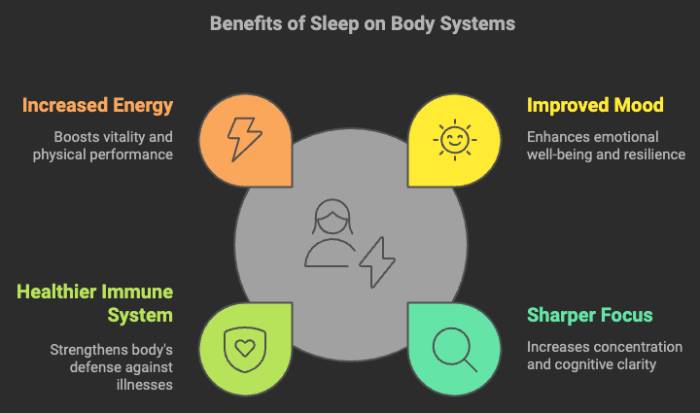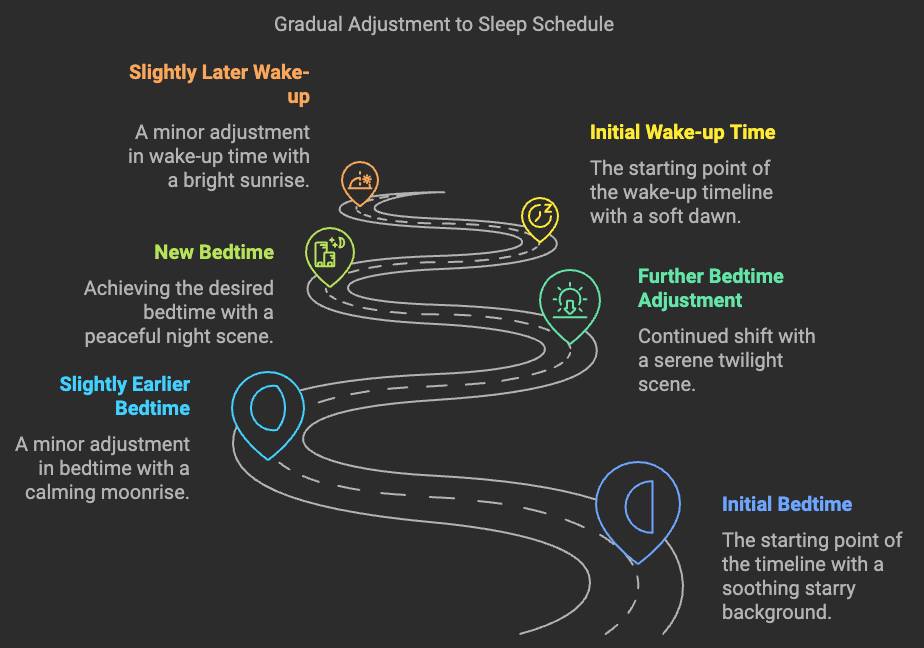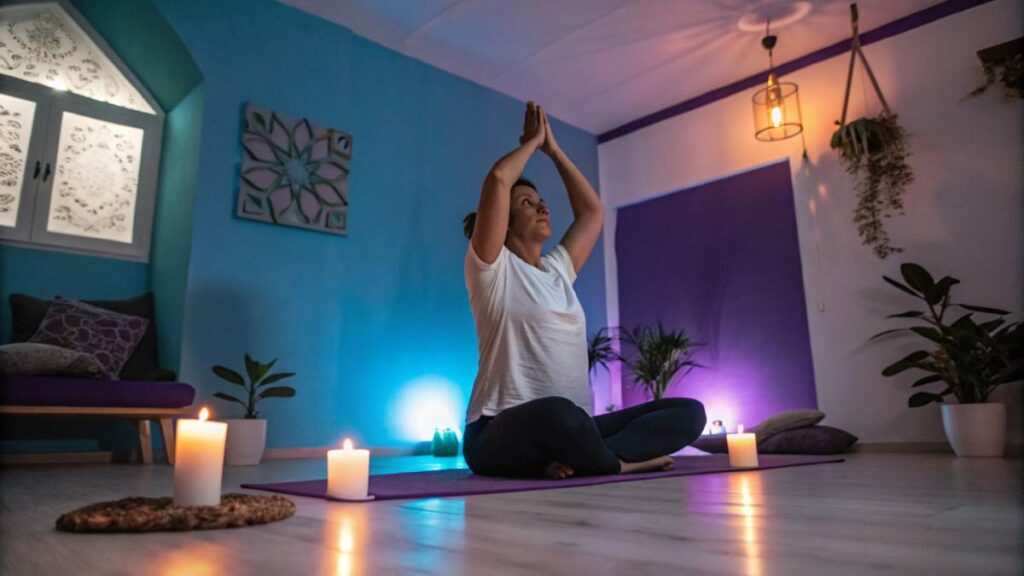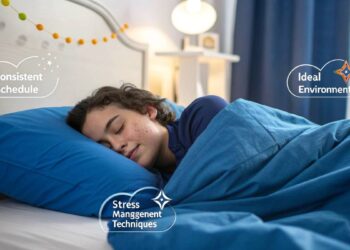Ever found yourself struggling to fall asleep at night, only to wake up groggy and unrested? You’re not alone. A disrupted sleep schedule can wreak havoc on your productivity, mood, and overall health. The good news? Resetting your sleep cycle doesn’t have to be a drawn-out battle. In this article, we’ll explore practical and scientifically backed methods to help you reclaim those blissful Zs. Whether you’re dealing with shift work, family obligations, or endless screen time, your journey to better sleep starts here.
Key Takeaways
- The Importance of a Sleep Routine: A regular sleep schedule improves mood, boosts cognitive performance, and enhances overall health.
- Identify Disruptors: Pinpoint factors like caffeine, screen time, or an uncomfortable environment that sabotages sleep.
- Adjust Gradually: Slowly modify your bedtime and wake-up times to reset your internal clock without shock.
- Optimize Light Exposure: Use natural light to wake up and avoid blue light in the evenings to promote melatonin production.
- Healthy Habits for Rest: Implement bedtime routines, control food and caffeine intake, and create a comfortable sleep environment.
- Seek Help When Needed: Professional assistance, sleep apps, or therapy can provide targeted strategies for stubborn sleep issues.
Understanding Sleep Schedule Resetting
Getting your sleep schedule back in line isn’t just about feeling well-rested; it’s about giving your life a little upgrade. Let’s break down how finding that sweet spot in your sleeping habits can make you feel like a new person. First off, it’s key to know why keeping a steady sleep routine matters and what bumps you might hit on this road to snooze nirvana.
“A consistent sleep schedule is the foundation of good health and well-being.” – Dr. Michael Breus, Clinical Psychologist and Sleep Specialist
Why a Regular Sleep Schedule Matters
When you keep a regular bedtime, it’s like setting your body’s own alarm clock. Here’s the scoop on the perks:
| Benefit | Explanation |
|---|---|
| Feeling Happier | Keeping to a sleep routine keeps those mood swings at bay. |
| Better Brain Power | Enough sleep sharpens focus and makes remembering things easier. |
| Healthier Body | Regular zzz’s can mean fewer sick days with a stronger defense system. |
| More Get-Up-and-Go | A good night’s sleep fuels energy for all the day’s tasks. |
Sticking to the same sleep times makes it a breeze to drift off and pop out of bed refreshed. If you’re curious about waking up on the right side of the bed, check out our piece on morning routines for better sleep.
Tackling Sleep Schedule Reset Challenges
Getting your bedtime back on track is not always smooth sailing. Here are some hiccups you might hit:
- Weird Work Hours: If your job’s all over the map, it can throw your sleep off course.
- Family Stuff: Juggling family commitments? You might find your sleep sidelined.
- School Juggling: If you’re a student, balancing books and bed can mess up sleep cycles.
- Too Much Screen Time: Endless scrolling or binge-watching can keep you counting sheep.
- Sleep Space Woes: Things like noise or a room that’s too bright or warm could keep you awake.
These hurdles call for some clever tactics to get back on track, check out how to reset your sleep schedule fast. Knowing why a steady sleep schedule counts and what might trip you up are the first steps to catching those coveted zzz’s more effortlessly.
Assessing Your Current Sleep Habits
Before jumping into the mission of fixing your sleep schedule in record time, it’s vital to know what’s going on with your snoozing habits. Think of it like checking out the lay of the land before setting up camp.

Identifying Sleep Patterns
Sometimes folks aren’t entirely clued in on their sleep quirks, which can seriously mess with quality shut-eye. Keeping tabs with a sleep journal, jotting down when you hit the hay and when you rise and shine, does wonders for revealing patterns.
| Day | Bedtime | Wake-Up Time | Total Sleep (Hours) |
|---|---|---|---|
| Monday | 10:30 PM | 6:30 AM | 8 |
| Tuesday | 12:00 AM | 7:00 AM | 7 |
| Wednesday | 11:00 PM | 6:00 AM | 7 |
| Thursday | 1:00 AM | 8:00 AM | 7 |
| Friday | 12:30 AM | 10:00 AM | 9 |
| Saturday | 2:00 AM | 11:00 AM | 9 |
| Sunday | 11:00 PM | 7:00 AM | 8 |
Looking at these numbers helps in spotting trends and figuring out the magic moment to hop into bed. Planning for a regular sleep routine, you might find a handy-dandy bedtime calculator useful for pinning down those perfect sleep hours.
Recognizing Disruptive Factors
Several things can throw a wrench in your sleep quality and mess up your schedule. Some usual sleep saboteurs include:
- Caffeine Usage: Guzzling caffeine late in the day can make you feel as jittery as a squirrel on energy drinks.
- Screen Time: Those glowing screens zap melatonin production, making you think you’re Red Bull-infused. Choosing screen-free bedtime activities could be the answer.
- Family and Work Commitments: A whirlwind of tasks and commitments might push your bedtime all over the clock.
- Stress and Anxiety: When your mind’s buzzing louder than a beehive, quality sleep can seem like a distant dream. Look into some good stress management techniques to help.
Spotting these disruptive culprits makes it easier to adjust your sleep strategy. By using neat tools like a sleep journal template, you can keep tabs on these influences and tailor your sleep style to make more rested choices in catching those z’s.
Quick Methods to Reset Sleep Schedule
Finding a way to hit the sleep reset button can be a lifesaver for anyone tired of tossing and turning—and who isn’t these days? Let’s break down some speedy ways to rearrange those sleep patterns and get you snoozin’ like a pro in no time.

Gradual Adjustment Approach
Think of this as nudging, not shoving, your sleep schedule. By shifting your bedtime or wake-up call a smidge—a mere 15 to 30 minutes each day—your body will hardly notice the change but will thank you later. Here’s a little road map for you sleepyheads:
| Day | Wake-Up Time | Bedtime |
|---|---|---|
| 1 | 7:30 AM | 11:30 PM |
| 2 | 7:15 AM | 11:15 PM |
| 3 | 7:00 AM | 11:00 PM |
| 4 | 6:45 AM | 10:45 PM |
| 5 | 6:30 AM | 10:30 PM |
This technique is gold for shift workers or anyone whose schedule jumps around like a pogo stick. Need more bedtime guidance? Check out our tips in how to create bedtime routine.
Strategic Nap Times
Naps: delightful little gems or sleep wreckers? Both, depending on timing. Keep those mid-day Z’s short and sweet to dodge nighttime chaos. Here’s a quick nap guide:
- Cap naps at 20-30 minutes.
- Opt for early afternoon shut-eye, between 1 PM and 3 PM.
- Steer clear of late-day naps to avoid nighttime rest havoc.
Dive deeper into quick snooze tips over at how to power nap effectively.
| Nap Duration | Best Time | Impact on Night Sleep |
|---|---|---|
| 20 minutes | 1:00 PM – 3:00 PM | Won’t mess with sleep |
| 30 minutes | 1:00 PM – 3:00 PM | Safe as ‘houses’ |
| 1 hour | Not recommended | A total disaster |
Light Exposure Regulation
Light’s like the maestro of your sleep concert, telling your brain when to wake up or hit the sack. Use light to your advantage:
- Soak up the sun in the morning by stepping outside or finding a window seat.
- Ditch the blue light at night—think less Instagram, and more paperback novels. Or, consider blue light-blocking glasses if you’re feeling fancy. Want nighttime hobby ideas? Peek at screen-free bedtime activities.
- Bedroom Lighting 101: keep it dark as a dungeon with blackout curtains, and ditch all bright lights before bedtime.
By playing light maestro, you can reset your sleep tune. Curious about morning routines? Explore the morning routine for better sleep.
With these little tweaks, anyone can gear up to hit the hay with ease and snag some quality slumber!
Implementing Healthy Sleep Practices
Getting that beauty rest isn’t just for fairy tales; it can work wonders to reset your sleep schedule pronto. Incorporating a cozy bedtime routine, fixing up your snooze area, and watching what you munch before hitting the hay can seriously jazz up those Zs you’re chasing.
Establishing a Bedtime Routine
Nailing down a bedtime routine is like sending your brain a memo that it’s time to chill. You know, stuff that tells your body, “Hey buddy, lights out soon!”
Here’s a sweet bedtime routine, no sleep expert required:
| Time Before Bed | What to Do |
|---|---|
| 30-60 mins | Ditch the gadgets—read or scribble in a journal. For more chill ways to unplug, peep at our guide on screen-free bedtime activities. |
| 20-30 mins | Get your zen on with some mellow stretches or yoga. |
| 10-15 mins | Breathe deep, meditate, or just zone out. Wanna up your game? Check our tips on how to create a bedtime routine. |
When you stick with this groove, you set yourself up for a regular sleep rhythm, which is pure gold if you need to reset your sleep schedule fast.
Creating a Comfortable Sleep Environment
A dreamy sleep space can make all the difference in catching solid shut-eye. Details like sound, light, and room temps should all be taken into account.

Dial up your snooze zone with these tweaks:
| What to Adjust | How to Do It |
|---|---|
| Light | Throw up blackout curtains or slap on a sleep mask. Need more ideas? Skim our article about the best sleep mask routine. |
| Noise | Block out interruptions with a white noise machine or trusty earplugs. |
| Temperature | Keep things chill—literally. Set the thermostat between 60-67°F. Find more bedtime setup hacks in our Sunday routine for sleep. |
| Bedding | Cozy up with pillows and a mattress that suit your style. |
A chill sleep den sets the scene for solid slumber and a solid routine.
Monitoring Caffeine and Food Intake
What you chow down on can mess with your night’s rest. Keeping tabs on caffeine and noshing at night can give your sleep a boost.
Here’s how to keep things cool:
| Food and Drink Advice | Timing |
|---|---|
| Skip caffeine | Pull the plug on caffeine at least 6 hours before bed. Want to know when exercise fits into this? Peek at our best time to exercise for sleep. |
| Light Bites at Dinner | Go easy with meals 2-3 hours before bed—keep it light. |
| Herbal Teas | Sip some herbal tea; it’s like liquid relaxation. Check out best teas for a bedtime routine. |
By weaving in these habits, you’ll craft a sturdy slate of sleep rituals, spot-on for reshuffling your sleep game, perfect for those itching to reset their sleep schedule fast.
Stress Management for Better Sleep
Getting your stress under control can be a game-changer when it comes to catching those essential Z’s. By adding in some chill-out techniques, moments of mindfulness, and a sprinkle of breathing exercises into your daily hustle, you’ll find yourself snoozing like a champ. Here’s how to get some awesome shut-eye.
“The quality of your sleep directly impacts the quality of your life, including your productivity, emotional balance, and even weight.” – National Sleep Foundation
Relaxation Techniques
Creating your own chill zone can really help get your mind off the spin cycle and ease your body into rest mode. Here’s how:
| Technique | Description |
|---|---|
| Progressive Muscle Relaxation | Give your muscles a workout by tensing and letting go of each group—from your little toes to the tip of your noggin. |
| Guided Imagery | Pretend you’re somewhere peaceful, like an island or a quiet forest, to help melt away stress. |
| Aromatherapy | Try dropping scents like lavender and chamomile on your pillow or use a diffuser to vibe your space out. |
Adding these activities to your evening flow can help you glide into sleep with ease. For a few pointers on making your evenings peaceful, check our guide on how to create a bedtime routine.
Mindfulness and Meditation
Mindfulness and meditation can work wonders on sleep quality. These practices help you stay in the moment and notice your thoughts without jumping to conclusions, which can zap away stress and worries. Popular mindfulness tricks include:
| Practice | Method |
|---|---|
| Body Scan | Tune into your body from head to foot, noticing each sensation to unwind. |
| Breathing Meditations | Zero in on deep breaths to gather your thoughts and chill your mind. |
| Mindful Journaling | Scribbling out your thoughts and feelings before bed to clear the mental clutter. |
Making mindfulness a regular habit can have you sleeping like a log. For stress-busting tips, check out our post about morning routine for better sleep.

Breathing Exercises
Breathing exercises are your go-to for dialing down stress and slipping into a relaxed state before hitting the hay. Try these popular exercises:
| Exercise | Instructions |
|---|---|
| 4-7-8 Breathing | Breathe in for 4 seconds, hold for 7, and breathe out over 8 seconds. Do this a few rounds. |
| Diaphragmatic Breathing | Breathe from your belly instead of your chest: inhale for 5 seconds, hold for 2, exhale for 5. |
| Box Breathing | Breathe in for 4 seconds, hold for 4, breathe out for 4, hold again for 4. Keep it going for a bit. |
These breathing tactics can get your mind and body ready for sleep, especially if your sleep patterns have been out of whack. Want to keep tabs on your snoozing habits? Check out our sleep journal template to record what’s going on during your snooze fest.
Physical Activity and Sleep
Getting the lowdown on how workouts and sleep buddy up can really help hit the reset on your snooze schedule pronto! Throwing some regular exercise into your day not only pumps up better Zs but also helps nail down those healthy snooze patterns.

Exercise Timing for Sleep
The clock matters big-time for workouts’ impact on sleep. To snag the best outcomes, make sure to wrap up those intense sweat sessions at least three hours before hitting the hay. This gives your body the chill-out time it needs to wind down into sleep mode.
| Exercise Type | Best Time to Do It |
|---|---|
| Aerobic Exercise | Morning or Afternoon |
| Strength Training | Late Afternoon |
| Light Stretching | Right Before Bed |
Figuring out a workout plan that fits your groove means you’ll nail when it’s best to get moving. Check our take on morning vibes for sleep and evening chill checklist for tips on getting it just right.
Types of Exercise for Better Sleep
Mixing up your physical antics can really amp up your sleep game. Here’s a cheat sheet on different exercises and how they jazz up sleep quality.
| Type of Exercise | Sleep Boosts |
|---|---|
| Aerobic Exercise (e.g., running, cycling) | Kicks up endorphins, digs deeper sleep grooves |
| Strength Training (e.g., weightlifting) | Cuts stress and boosts chill vibes |
| Yoga or Stretching | Soothes mind and body, primes you for dreamland |
Throwing a bunch of these workouts into your week can stack the sleep deck in your favor. If you’re trying to spice up your pre-bedtime groove, dive into our Make a bedtime routine guide.
Importance of Consistent Physical Activity
Regular physical jam sessions aren’t just a sleep booster now but have long-haul perks too, like steady sleep routines and cutting down those wee-hour toss-and-turns. Consistency rocks; shoot for 150 minutes of moderate activity a week, and you’re likely to see better dreams.
| Weekly Exercise Target | Activities to Try |
|---|---|
| 150 minutes | Brisk walking, cycling, dancing |
| 75 minutes | Running, swimming, high-intensity workouts |
A regular workout schedule harmonizes with your own sleep rhythm, making it a breeze to reorganize your sleep schedule fast. For more on ace sleeping tactics, check out our scoop on the optimal exercise time for sleep and grab our sleep journal blueprint to track how you’re doing.
Seeking Professional Help
Sometimes, getting that sleep schedule on track takes more than sheer willpower. When counting sheep isn’t cutting it, it’s time to call in the experts, who bring a bag of tricks tailored to your snoozy needs. Let’s snoop into the world of professional aid.
Consulting a Sleep Specialist
When Z’s turn into chores, it’s wise to ring up a sleep expert. These sleep whisperers dive into your snooze struggles, assessing disorders and custom-building strategies to get you back on track pronto. On-going chats might even reveal sneaky health issues messing with your slumber.
| Why Chat with a Sleep Specialist? |
|---|
| Tailor-made sleep strategies |
| Spotting sleep-related hassles |
| Advice on handling sleep meds |
Utilizing Sleep Apps and Tools
Thanks to tech, tracking how you snooze has never been easier. Nowadays, apps can peek at your sleep patterns, remind you to hit the hay, and even teach you to chill out. Handy for workers and students alike, they keep tabs on habits and tweak them for a speedy snooze reset.
To explore more sleep helpers, check out our article on the best sleep routine apps.
Engaging in Therapy or Counseling
Sometimes stress and those midnight worries gang up on your sleep schedule. Therapy or counseling can come to the rescue, offering ways to cope with stress and ease those swirling thoughts. Therapists can help tackle the mental mayhem that turns good nights into sleepless ones.
| Perks of Therapy for Better Shut-Eye |
|---|
| Stress-busting techniques |
| CBT for tackling insomnia (CBT-I) |
| Emotional backup and keeping you on track |
Many find therapy boosts their sleep’s sweet spot. Balancing life is crucial, especially for folks juggling wacky work hours or cram sessions. Plus, keeping a sleep journal template can track progress and pinpoint patterns, steering you towards those elusive restful nights.
Conclusion
Resetting your sleep schedule is not just about reclaiming your nights—it’s about regaining control over your days. By understanding the power of a consistent sleep routine, identifying common disruptors, and making small, actionable changes, you can transform your nights from restless to restful. Whether it’s using strategic light exposure, optimizing your sleep environment, or practicing relaxation techniques, these steps will guide you toward a healthier, happier you. Remember, quality sleep isn’t a luxury—it’s essential for thriving. Take the first step tonight. Sweet dreams await!
FAQs
What causes a disrupted sleep schedule?
Common causes include irregular work hours, excessive screen time, stress, and an uncomfortable sleeping environment.
How can I adjust my sleep schedule gradually?
Shift your bedtime and wake-up times by 15–30 minutes daily until you reach the desired schedule.
Does light exposure affect sleep?
Yes, morning sunlight helps regulate your internal clock, while reducing blue light exposure in the evening boosts melatonin production.
Are naps helpful or harmful when resetting sleep?
Short naps (20–30 minutes) in the early afternoon can improve alertness without disrupting nighttime sleep.
When should I seek professional help for sleep problems?
If sleep issues persist despite lifestyle changes, consult a sleep specialist or consider cognitive behavioral therapy for insomnia (CBT-I).






